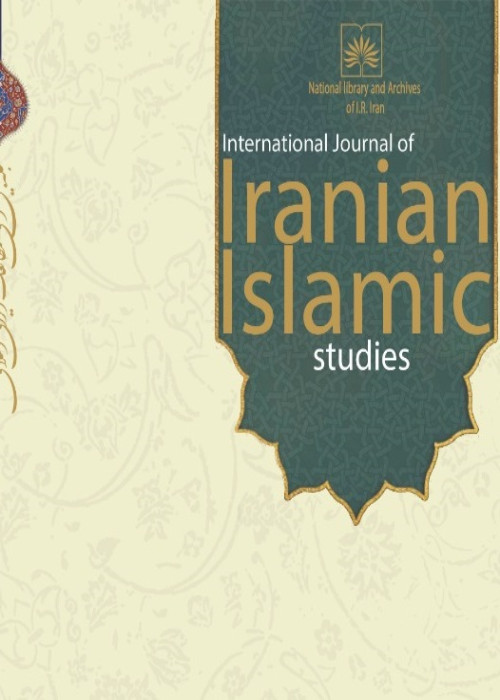The school education system of Iran during the Safavid period emphasizing the narrative of European travelers
Author(s):
Article Type:
Research/Original Article (بدون رتبه معتبر)
Abstract:
The history of the school "Maktabkhane" in Iran as a place to teach reading or writing goes back to pre-Islamic times. During the Islamic era, learning the Quran and religious principles was also added to the function of the school. Gradually, in different Islamic eras, the school was considered one of the educational institutions where children were taught to read and write, as well as learn the Quran and religious instructions. In the Safavid era, according to the available reports, many schools in the cities of Iran were responsible for the education of children at the elementary level. In this article, the educational system of the Safavid "Maktabkhane” or school has been analyzed in a descriptive-analytical way based on the reports of European travelers and historiographical texts of that era. The findings of the research show that in the Safavid era, there was a kind of school education system for the education of children, which did not have the same organization and internal rules for it. These schools were managed only at the request of the school owners or their founders, outside of government rules and regulations.IntroductionOne of the most important institutions in any society is the institution of education, which is in charge of educating, educating, and training people in society. The background of this institution in Iran goes back to the ancient period and it has been continued in the Islamic period based on Islamic education. In the Safavid era, the educational system was carried out in the form of schools. Schools were responsible for making children and young people literate or teaching them to read and write. The European travel writers who have observed Iranian society during their travels and visits to Iran during the Safavid era have tried to gather information from various angles, they have an almost clear picture of the good and bad of the education system in Iran. At this time, the interest of Iranians from all walks of life and groups was to increase science and knowledge. The Iranian Family cared about children's education in school and continuing their education in higher schools, which were mostly religious fields. Among the topics that tourists paid attention to were the costs and teaching methods in schools and their weaknesses and shortcomings. This article, by posing the question, what image did the European tourists present of the education system of Safavid era Iran at the elementary level (education of children and teenagers.materials and methodsSince the nature of this article is historical and we have to look for the answers to the questions of this article in the travelogue writers' texts, the research method is descriptive-analytical based on library sources. In this article, the education system of the Safavid era schools has been examined based on the reports of European travelers and the historiographical texts of that era, and an attempt has been made to answer the question of what image European travelers have of the education system at the primary level (especially for children and teenagers) in Iran during the Safavid period?Discussion of Results & ConclusionsExamining the reports of European travelers about the social and cultural conditions of Iran during the Safavid era shows that in the educational system of this period, there were schools, "Maktabkhane" in different cities. They were mainly responsible for the education of children. These schools were not state-owned but were established by individuals, and their educational regulations were subject to the wishes and will of the school's founder or owner. The educational program of these schools included the teaching of the Qur'an, the basics of Arabic and Persian, religion and religion, and learning calligraphy and arithmetic. Research showed that the purpose of schools was to prepare children to enter higher education. Therefore, becoming literate to enter into daily life and the ability to do business and to do things related to profession, work, and livelihood were considered among their goals. Also, in these schools, children are taught politeness and correct behavior, and how to respect elders. There were no government rules and regulations for the schools, and the regulations in each city were according to the taste and wishes of the school owner. In addition to schools, families also played a role in the education of children by choosing a teacher at home and taking care of their behavior and education. The government system also intervened in the education of the prince's and nobles' children, and in this way, they applied their views and wishes in the education of these children to achieve the desired goals in the future of the government. In general, the writings of European travelers along with the scattered reports of the official sources of the Safavid period provide a clear picture of the school system in Iran.
Keywords:
Language:
Persian
Published:
Journal of Iranian Islamic Studies, Volume:12 Issue: 2, 2022
Pages:
53 to 81
magiran.com/p2612558
دانلود و مطالعه متن این مقاله با یکی از روشهای زیر امکان پذیر است:
اشتراک شخصی
با عضویت و پرداخت آنلاین حق اشتراک یکساله به مبلغ 1,390,000ريال میتوانید 70 عنوان مطلب دانلود کنید!
اشتراک سازمانی
به کتابخانه دانشگاه یا محل کار خود پیشنهاد کنید تا اشتراک سازمانی این پایگاه را برای دسترسی نامحدود همه کاربران به متن مطالب تهیه نمایند!
توجه!
- حق عضویت دریافتی صرف حمایت از نشریات عضو و نگهداری، تکمیل و توسعه مگیران میشود.
- پرداخت حق اشتراک و دانلود مقالات اجازه بازنشر آن در سایر رسانههای چاپی و دیجیتال را به کاربر نمیدهد.
In order to view content subscription is required
Personal subscription
Subscribe magiran.com for 70 € euros via PayPal and download 70 articles during a year.
Organization subscription
Please contact us to subscribe your university or library for unlimited access!


